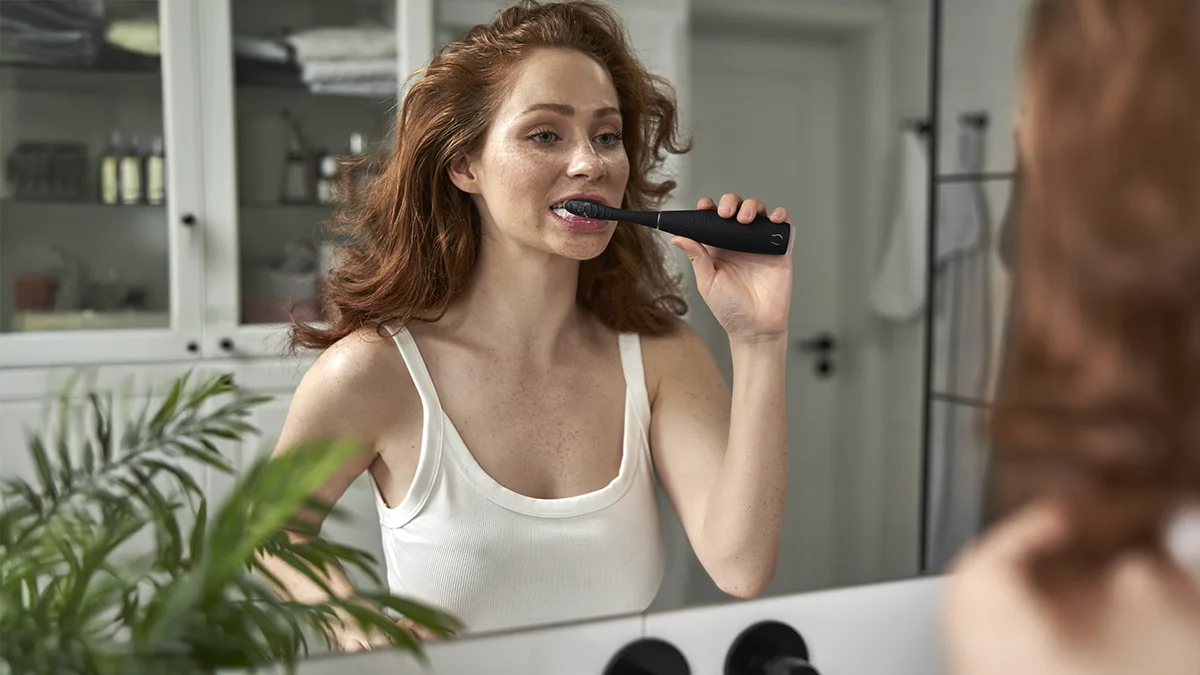2 min read
How to Get Rid of Plaque on Teeth

A bright smile not only boosts your confidence but also signifies good oral health. However, maintaining that radiant smile requires diligent care, as plaque buildup on teeth can be a common concern. Plaque is a sticky, colorless film of bacteria that forms on your teeth, and if left untreated, it can lead to dental problems like cavities and gum disease.
What Is Plaque?
Plaque is a biofilm composed of bacteria and their byproducts. When you consume sugary or starchy foods, bacteria in your mouth feed on food debris, producing acids that erode tooth enamel (the protective outer layer of the teeth) and lead to plaque formation. It’s normal to have plaque, but it can lead to oral health issues if you don’t remove it regularly.
Plaque vs Tartar
Skipping daily brushing and flossing will result in plaque buildup on your teeth. When plaque is not effectively removed, it interacts with minerals in your saliva and hardens under or above your gum line into tartar (calculus), turning into a yellow or brownish deposit on the teeth. Those with braces, dry mouth, crowded teeth, or smokers are more prone to tartar buildup. Unlike plaque, tartar cannot be eliminated through regular brushing and flossing and requires professional dental cleaning. Tartar buildup can irritate the gums and lead to inflammation and more severe gum problems, like receding gums.
How Plaque Causes Cavities
When you consume sugary foods and drinks, the bacteria in plaque feed on these carbohydrates and produce acids as byproducts. If you leave plaque to build up, these acids lower the pH level in your mouth, creating an acidic environment that demineralizes the tooth enamel. Over time, this acid attack weakens the enamel, making it vulnerable to further erosion. If the acid production continues and plaque is not removed through proper oral hygiene, the enamel can break down, forming small pits or holes in the tooth's surface, known as cavities. Without prompt intervention, these cavities can deepen, leading to more significant dental problems, such as infection and toothache.
Maintaining Proper Oral Care Routine
Brushing: Use fluoride toothpaste and a soft-bristle toothbrush to brush your teeth at least twice daily. Pay attention to each tooth's surface, including the front, back, and chewing surfaces.
Flossing: Daily flossing helps remove plaque and food particles between your teeth and along the gumline, where your toothbrush might not reach effectively.
Mouthwash: Rinse with an antibacterial mouthwash to kill harmful bacteria and freshen your breath. Look for products with fluoride to strengthen enamel.
Choose the Right Toothbrush
Consider using an electric toothbrush: We recommend issa™ 4 , clinically proven to remove 30% more plaque than a regular manual toothbrush. Unlike other electric toothbrushes, issa™ 4 allows you to use a natural manual gesture while experiencing electric toothbrush results. Powered by Sonic Pulse technology, it offers 16 intensity levels for a fully personalized brushing experience. And you don’t have to worry about how long you should brush your teeth, as issa™ 4 will indicate when it’s time to move to the next tooth quadrant and when the routine is done.
Interdental Brushes: Interdental brushes are small, flexible brushes designed to clean between teeth and around dental tools like braces. They can be especially helpful in removing plaque from hard-to-reach areas.

Watch Your Diet
Limit Sugary and Starchy Foods: Minimize your consumption of sugary and starchy foods and drinks, as they fuel plaque-forming bacteria.
Eat Fiber-Rich Foods: Incorporate fibrous fruits and vegetables into your diet. Chewing these foods helps naturally clean your teeth and stimulate saliva production, which can neutralize acids.
Regular Dental Checkups
Visit your dentist regularly for checkups and professional teeth cleaning. Dental professionals have the tools and expertise to remove hardened plaque (tartar) that you can't eliminate at home.








Comments
2 comments
Leave a comment